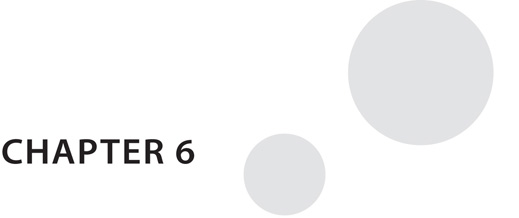

WHAT HAPPENS TO the information that is put onto a bad memory-surface is determined by the nature of that surface. By ‘nature of the surface’ is meant all the processes and rules of behaviour which taken together constitute a special universe.
A universe is a situation with special rules of its own. Anything that happens in that situation has to happen according to these rules, which are not arbitrary but arise from the way the situation is organized, from the nature of the situation.
A game of Monopoly is a universe in which quite complex things go on. Though there is some resemblance to what happens in the real world, the game world is governed by its own special rules. A game of chess is another universe where another special set of rules determines what happens.
The rules governing the way things happen in the one proper world that we know are so familiar that it is easy to suppose that the same rules must apply everywhere else. If you drop a bottle it falls to the ground. But there are other universes where it would behave differently. In one of these other universes the bottle would remain floating where it was released. In another one the bottle might actually go upwards. The bottle would in each case be behaving according to the rules of the universe in which it was placed. In the universe of a spaceship the bottle would remain where it had been released. In an underwater universe the bottle would float upwards if it were empty or sink if it were full.
When one puts a plate on a table one expects it to stay there until one takes it off again or something else happens. If the room is locked up, one may come back years later and still find the plate where it had been left. One takes this for granted because one knows the rules. But it is possible to imagine very different universes with very different rules. A highly artificial universe might consist of a greenhouse inside which everything was made of ice. In such a universe the permanence of objects that we take for granted would no longer hold. A plate placed on the table would immediately start fading away – so would the table.
The universe we know has three dimensions, and again we take this for granted. What would happen in a universe with only two dimensions? Everything would be flat, and very different, but what went on in such a universe would be consistent with the rules of a two-dimensional universe. An ordinary photograph is a conversion of a three-dimensional universe into a two-dimensional one. So is a television screen. Neither are true two-dimensional universes because one still makes allowance for the third dimension. If someone enters a house on the television screen we do not suppose him to be merging with the house itself, as would be inevitable in a two-dimensional universe. With two dimensions there can be no ‘in front of’ or ‘behind’ or ‘within’.
The difficult thing is to realize that different universes have different rules of their own. One has to try and find out what those rules are in order to understand how things happen in that universe. It is not very useful to try and describe the goings-on as if they were happening according to the rules of the universe with which we are most familiar. The awkward point is to decide when the rules of behaviour in a situation are sufficiently consistent to make up a universe of their own. The rules are determined by the organization of the system; the actual material of the system may still obey the rules of another universe. Thus people are basically the same people, but the rules may be very different in different social universes.
When one tries to apply the rules of one universe to explain the behaviour in another, a great deal of difficulty can arise. This can result in very cumbersome explanations, or ones that just do not make sense. This would happen to someone who tried to play Monopoly not according to the rules of the game but according to the rules governing real-life commerce.
The other difficulty arises when one tries to translate what is happening in a new universe into a form that makes sense in the old universe. If you try and represent a three-dimensional globe on a two-dimensional map there is that familiar distortion that makes Greenland and Siberia look so enormous. This sort of distortion is inescapable, for if something is consistent with the rules of one universe it cannot be just as consistent with the different rules of another universe.
One needs to recognize the existence of special universes and learn their special rules of behaviour; then one can understand what goes on in those universes in terms of their own rules. The rules of the universe are determined by the organization of that universe, and one must look at this in order to learn the rules.
In a previous section it was pointed out that what a memory-surface did to the material it received depended on the rules of that surface. In turn, the rules depend on the organization of that surface. In fact the surface constitutes a universe in which things can only happen in a certain way. What happens in such a universe need not parallel what happens in the physical universe, or even in the universe we know. Nor need the processes be the processes which we take for granted as the only possible ones because we have grown up with them. It is possible to have a universe in which one plus one equals one and not two.